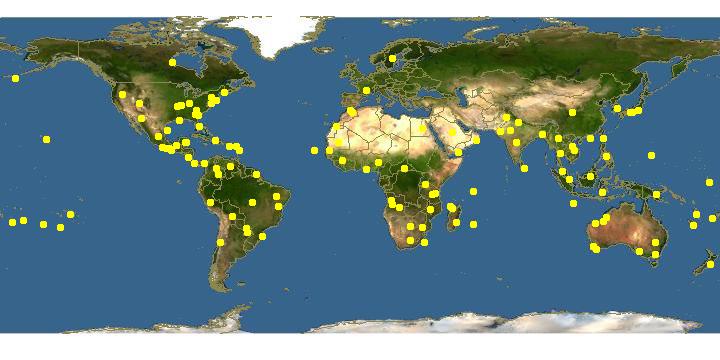
I’ve been busy lately: writing a synopsis for my current novel so I can shop it to agents, working on three short stories that won’t let me alone (drives me crazy in the middle of the night!), writing and assembling a “Parents Packet” for the folks at my church who want to send their kids to summer camp (that took 4 solid days!), and watching my kids (which also means driving them all over creation) this week because they’re home on Spring Break.
This is by way of apology for not having time to post comments on very many SS articles over the past couple of weeks. They’ve all been great; I’ve truly enjoyed reading every single one—but when it comes to posting comments, I’m really sorry. Too often, time management problems have reached out to snag me by the throat!
I wrote this post on Thursday morning in Scottsdale, Arizona. SS posts go up at midnight eastern time, which is 10:00 pm local time, and I’m scheduled at the cigar store from 4:00 pm to 9:30 pm. Which means: I need to put something together that folks will find worth reading, and that I’ll find quick to write. My solution?
A quick rundown on Explosives & How to Use Them.
I got the idea from what Deborah wrote yesterday, in her wonderful article examining the double-edge sword we all call Technology, about needing information concerning “how a weapon would work under certain situations.”
Now, I’ve fired all sorts of weapons — M-16’s, M-14’s, M-21 system (sniper rifle), M-60 Machine Gun (7.62 mm, I can dance with one of these pretty well), M1911 (commonly called a .45 automatic), M-9 (Army issue Barretta 9mm semi-auto sidearm), Ma-Deuce (M2, .50 cal. machine gun – not too good with this one, operator headspace & timing problems lol), M-79 “Blooper” (40 mm grenade launcher), M-203 (M-16 w/ 40 mm grenade launcher attached beneath upper receiver), AK 47 & other AK series, H&K MP5 & MP5SD (an automatic rifle—SD version is suppressed [has what Hollywood calls a “silencer”), suppressed Ruger .22 semi-auto target pistol, Light Anti-Tank Weapons (similar to a collapsible Bazooka – but NOT re-loadable, no matter what you saw in that Dirty Harry movie where they use them at Alcatraz), SAW’s, Glocks and other stuff — and, I’ve used them in the desert, the jungle, the African bush, while riding Zodiac rubber assault boats over the ocean, on the beach (while the weapon’s still wrapped in plastic) after swimming in as a member of a Scout Swim Team, in rain, snow and ice storms, and probably in more places than I care to remember! So, Deborah, feel free to call 24/7; I’m happy to answer any such questions I can. But, she also got me thinking about explosives . . .
Too often in fiction (print, television, films, on-line) I find myself turned off by writing that would have been a joy to read . . . except that the author didn’t know his/her “4th Point of Contact” (That’s paratrooper talk for: rear end) from a hole in the ground! So, I thought I’d post some pointers here that might help. Unfortunately, there’s a lot to explosives (I spent nearly 6 months studying them in the SF qualification course), so I’m going to post it in parts.
On the other hand, I’ve decided to label all the parts. And, if I remember, I’ll add the flags that will help you find the info you want when you need it (like in the dead of night, for instance).
Today’s Subject: RE Factor
Explosives are rated, and charge calculations are based on, what is called the “Relative Effectiveness Factor” (R.E. Factor, or just RE [“are-eee”] for short). I’m sure you’re familiar with the standard number line you learned in grade school, which has “0” (zero) as the baseline. An easy way to envision explosives that are listed by RE is to imagine them hanging from a spot on the number line.
On this number line, however, our base is TNT (Tri-Nitro Toluene C7H5N3O6) instead of zero. And, because charge calculations require multiplication, we’re going to assign TNT an RE Factor of “1” (one) instead of zero, because 1 is the multiplicative identity factor (don’t worry, there’s no test, and I’m not going to make you do math – I just want you to understand what RE is).
Explosive charge size is calculated based on the number of pounds of TNT required to do the job, then you multiply by the RE Factor of whatever explosive you plan to use, in order to convert “pounds of TNT” into the number of “pounds of the explosive you have on hand”.

For example: if we want to cut through a solid steel rod (maybe that rod is part of the support structure for a suspension bridge, for instance), we might use the formula P=3/8A. This means “Pounds of TNT needed to do the job” equals three-eighths of the “Area of the cross-section of the steel rod we plan to cut.” If it’s a rod with an area of one square inch, then we’d need 3/8 of a pound of TNT to cut the rod.
If we are using C-4 (plastic explosive) to cut the rod, then we’d divide our answer in the paragraph above by 1.34, because C-4’s RE is 1.34 (I know I said we were multiplying, but division is just inverted multiplication – it’s the same thing – Trust me!). In other words, C-4 is considered to have 1.34 times the relative effectiveness factor that TNT is calculated to have. And that’s why it’s called a Relative Effectiveness Factor, because C-4 has an explosive factor of 1.34 Relative to TNT’s explosive factor of 1.0.

Thus: if TNT sits at the baseline of 1 on our number line, C-4 sits at a spot that is labeled 1.34. Dynamite would be sitting just below TNT, at 0.98 and ANFO (Ammonium Nitrate and Fuel Oil – the explosive used by Timothy McVeigh to destroy the Murrah Federal Building in Oklahoma City) is farther down, because it has an RE of only 0.47 (if I recall correctly; I don’t have any of my FM’s at hand, so I’m just working off memory here; it might be 0.42 or 43, but I think it’s 0.47).
A few things to note:
(1) TNT has an RE of 1 in the military explosive charge calculation system. HOWEVER: I’ve worked with civilian blasters who calculated their charges based on an RE system that used Dynamite as the baseline (i.e. in some civilian blasters’ calculation systems, charges are formulated calculating against Dynamite with an RE of 1). This would mean that TNT would have an RE of something around 1. 02 in this system. I thought you might need to know this, incase you write a story about a civilian blaster who’s planted a bomb, or something. His calculations might be a little different than mine, because he’d be using Dynamite as his baseline, instead of TNT.

(2) Don’t be fooled into thinking that a low RE factor means an explosive isn’t potent. Remember what a low RE explosive like ANFO did to the Murrah Building!
3) A good way to think of RE is to compare it to gears on a vehicle. When you need the heavy push of a low gear — to get a heavy load moving — go with a low RE such as ANFO or something. So, use low RE to move dirt, blow out bridge abutments, or push-in the side of a building. BUT: If you wanted to drive your car through a wall, you wouldn’t do it by inching your car up to the wall and then trying to slowly nose through. Instead, you’d get going as fast as you could — in a high gear! — and slam through that wall. So, for breaching a wall or obstacle (or cutting through steel girders, maybe), you want an explosive with a high RE factor, such C-4. High RE explosives go off with a sharp, higher-pitched CRACK! than lower RE explosives that tend to explode with a WHUMP! that you can feel, and which makes the ground jump under your feet (or chest and legs, if you’re lying prone hugging mother earth for dear life as hot lead shreds the air overhead, while you’re counting down and praying your charge goes off on “Zero!” LOL).
(4) For you guys in law enforcement who are sitting there saying, “What’s he talking about? That’s not breaching!” don’t sweat it. The specialized breaching charges you guys use, such as WB, detcord wraps, FLS, etc. are just that — Specialized breaching charges, designed to lower the amount of spalling that occurs. Spalling is the breaking off of fractured concrete, steel or wood from whatever you were breaching; this stuff shoots out from the explosion area in the form of shrapnel and hurts or kills people on the other side of the door or wall you’re going through. The breaching charges you’re familiar with for CQB are designed to reduce that hazard, and are therefore much different than what I’ve described above. (Though Det Cord is filled with PETN, which has a very high RE).
(5) The fireball explosions Hollywood loves, such as the explosion on the ground floor in DieHard is created using gasoline or dust. If you don’t think airborne dust can create a tremendous explosion, talk to somebody who owns a grain elevator; s/he’ll tell you stories that will scare your pants off!
OH! And, one more thing about machine guns . . .
I recently read a story in which a character fired a “60-caliber machine gun” from a helicopter. I’ve never heard of a .60 Cal. I think the author heard of an M-60 machine gun, which fires 7.62 mm rounds (about .30 cal.) and thought the “60” in M-60 referred to the caliber of the round. Please don’t make the same mistake.
I think that about covers it for a “Quick Down & Dirty” about RE Factors. And, your eyes are probably glazing over in boredom about now. So, I’ll call a halt to proceedings. Next time, I’ll cover Blasting Caps and how to Prime A Block of Explosives. And, I promise: Absolutely NO MATH. Lol
Until then . . . Take it easy, and Have a BLAST! (Sorry, couldn’t help it.)
--Dixon





 You may have heard of the
You may have heard of the  Like other bannings, Arizona HB 2281 ARS §15-112 touts such lofty
goals of racial harmony and patriotism, but also like other bannings,
the result is something else. Reportedly, officials seized books while
studies were in session and subsequently shut down classes.
Like other bannings, Arizona HB 2281 ARS §15-112 touts such lofty
goals of racial harmony and patriotism, but also like other bannings,
the result is something else. Reportedly, officials seized books while
studies were in session and subsequently shut down classes. My take is nothing like banning books gets people to read them. A
couple of thousand miles away in New York City, Mayor Bloomberg twice
destroyed the so-called
My take is nothing like banning books gets people to read them. A
couple of thousand miles away in New York City, Mayor Bloomberg twice
destroyed the so-called 

































